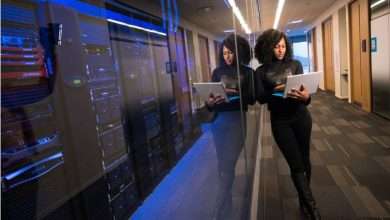How Distributed Teams Develop Modern Workplace Technology

The shift to remote work had taken hold, with 75% of working-age adults working remotely at least part-time in 2025, and 22.8% of US employees working remotely at least part-time as of March 2025. The shift transformed organizational operations. Companies implementing robust digital collaboration tools now demonstrate measurable gains in employee retention and productivity metrics. Web platforms, like specialized industry solutions like https://onjabet.com/en, provide a demonstration of how remote teams manage complex operations across several time zones using sophisticated technology stacks.
Video Communication and Collaboration Infrastructure
The global market for video conferencing was valued at $33.04 billion in 2024 and is projected to grow to $60.17 billion by 2032, with a CAGR of 7.1% during the forecast period. This growth indicates the widespread adoption of visual communication tools as part of core business infrastructure. Video conferencing productivity benefits studies indicate that companies using integrated communication platforms have faster decision cycles compared to email-based processes.
Modern video conferencing platforms now also have advanced features upgrading basic meetings into in-depth collaboration activities:
- AI-powered noise reduction and intelligent camera framing for business presentations
- Live transcription and auto-meeting summary for more accurate record-keeping
- Virtual whiteboard feature with simultaneous multi-user input and editing
- Cross-platform functionality facilitating easy connection between devices and operating systems
- Enhanced security measures protecting confidential business communications
Video conferencing platforms generated $7 billion in revenue in 2022, with consumer usage contributing $3.36 billion and enterprise usage contributing $3.64 billion. Firms that have made investments in effective video communications infrastructure report reduced travel costs and shorter project implementation times compared to normal meeting platforms.
Project Management and Digital Workflow Systems
Cloud project management software transformed coordination of work from simple scheduling into complex workflow orchestration. Industrial waste heat recovery optimization demonstrates efficiency ideas similar to remote work optimization—transforming lost resources into productive labor.
Real-time Collaboration and File Management
88% of 2023 meetings had one or more remote participants and 37% of companies upgraded their meeting equipment to enable virtual participation. Cloud collaboration adoption enterprise states that enterprises that use integrated document editing platforms experience spectacular reductions in project revision cycles. Teams using collaborative editing tools have fewer errors in end output and faster approval cycles.
Modern collaboration tools combine various functionalities into consolidated platforms. Document editing, versioning, and live editing happen within collaborative environments that ensure consistency among dispersed teams. Automatic tracking of changes eliminates the messy array of document versions that long bedeviled remote collaboration.
Commercial Real Estate Market Transformation
The office sector’s vacancy rate was 20.0% across the country in Q2 2024, and prices for office space were declining as companies continued to reduce their physical footprints. The shift is about more than adaptable workplaces—it is a foundational shift in how organizations use assets and organize themselves.
Remote work technology directly influences urban planning and trends in real estate development. Commercial real estate property values are up 4% for the 12 months to June 2024 but remain 18% lower than at their 2022 high. Companies invest capital on decentralized infrastructure rather than centralized office technology, creating new investment patterns in business processes.
Urban Infrastructure and Transportation Impact
US housing expenses rose by 24% from November 2019 to November 2021, with remote work being linked to driving more than 60% of the rise. Transportation infrastructure changed with changing commuter patterns, with rush-hour traffic falling in areas that were characterized by remote work. Urban centers show shifts in public transit use, with off-peak service becoming increasingly important as typical rush hours lost their volume.
Co-working spaces emerged as hybrid options, providing business spaces without the need for long-term leases. These venues support organizations embracing flexible work patterns combining remote productivity and face-to-face collaboration on a demand basis. Growth of these venues follows changed business needs for flexible workspace arrangements rather than conventional office spaces.
Spending on technology trends shifted to facilitate distributed operations. Organizations place a growing importance on cybersecurity solutions, cloud infrastructure expansion, and employee device support over office machines and building maintenance. This shift indicates the extent to which remote work technology affects overall business strategy and resource distribution.
36% of respondents mention they like to work from home daily, hybrid mode (28%), and working in an office every day (27%). Emerging through this tech shift isn’t just operational flexibility—it’s a radical redefinition of productive work being accomplished. The weapons that started as bandaids now make up the infrastructure of modern business operations, unleashing potential that far surpasses past geographic and temporal constraints.



